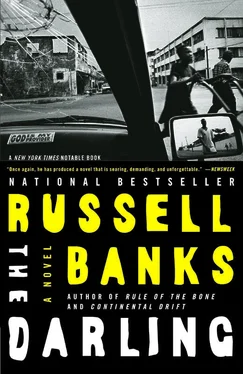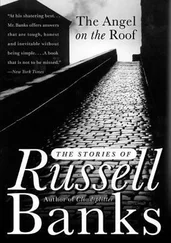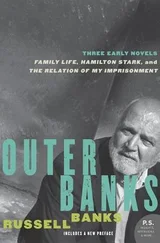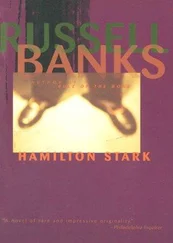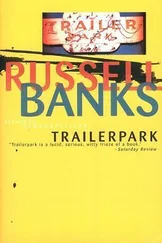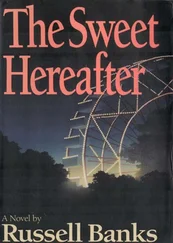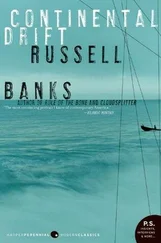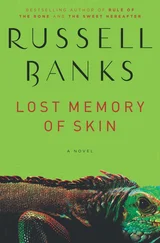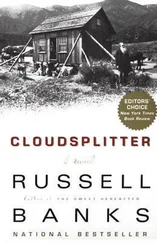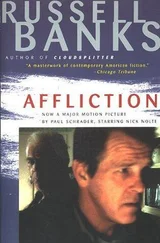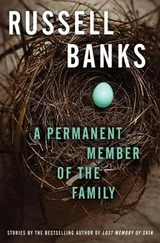Thoughtful white and some black Americans asked themselves, Why not send the freed slaves back to Africa? Why not create an alliance between northern white Christians and anti-slavery advocates and slaveholders from New York State to Georgia, and give the already free and manumitted blacks some seed money, an ax, and a Bible? And why not raise government and philanthropic funds to purchase the freedom of enslaved blacks — especially the more troublesome ones — give them a one-way ticket to Africa in exchange for their freedom, and let those people go?
Baptist and Methodist missionaries on reconnaissance had already spotted a corner of coastal West Africa overlooked by the British, French, and Portugese slave traders that perfectly suited these purposes. It was a large tract of impenetrable jungle, mangrove swamps, and malaria-infested estuaries, a plot of super-heated, saturated ground that no one else wanted — except, of course, for the fifteen or sixteen tribes of illiterate, black-skinned savages who happened to be living there unencumbered by legal deed or title. The word Liberia was not on any map, though surely the native people had a name for the region and for the Mandingo tribal village situated conveniently for coastal trade between the Europeans and the tribes from the hinterlands on a high peninsula at the seaside terminus of a large river. Why not ship forty or fifty thousand mostly literate, nominally Christian black-skinned Americans overseas to Africa, then? Why not send them from the fatherland to the motherland, from the home of their masters to the home of their ancestors, tell them this land is your land, and let them make the place safe for Christianity, civilization, and capitalism?
The place was perfect. The first American settlers — several hundred Christian freedmen and — women and recently manumitted slaves — came ashore in 1825. They named the Mandingo trading village on the peninsula Monrovia, after James Monroe, the fifth American president, who had been an early sponsor of the notion of return. And thus, in short order, was established the first U.S. colony. Soon to be known as the Republic of Liberia, it was organized from the start to operate not as a straightforward colony, but as a covert surrogate, clamped tight to the white-skinned leg of its North American founding fatherland. Consequently, as early as the 1840s, the Americans, unlike their European cousins, had installed in West Africa a homegrown, self-replacing class of overseers — a loyal ruling class made up of tens of thousands of freed and escaped ex-slaves who’d been making Philadelphia, New York, and Boston so scary, and nearly as many manumitted slaves, almost all of them from the South, who’d been offered and had accepted banishment in place of slavery. And for a long time, even to today, the arrangement paid the investors back handsomely.
After the Civil War, of course, it grew increasingly difficult to convince African-Americans to relocate to the soppy, equatorial jungles of West Africa, when they could homestead instead in Kansas or the Oklahoma Territory. Recruitment by the American Colonization Societies, as the founders were called, fell off. In Liberia, however, a diminished ability to recruit new settlers turned out not to be a major handicap. By the 1870s the black American settlers were running things — mainly from the coastal towns of Monrovia and Buchanan — efficiently and ruthlessly enough to generate a wide range of exports at little or no cost to the Stateside importers. Not only was this a feel-good program for white Christians in the United States, but also the resident tribes of savages in the nation were proving to be nearly as economically advantageous as the enslaved African-Americans had been back before the Civil War. The black Americans in Africa had duplicated nicely the old Southern and Caribbean plantation overseer system. It had worked there; it could work in Africa, too. No reason for the whip hand to be white.
By the end of the nineteenth century, just as in parts of the deep South and the Caribbean at the end of the eighteenth, one percent of the population of Liberia for all intents and purposes owned the other ninety-nine percent, and a huge chunk of the profits generated by the back-breaking labor of that ninety-nine percent went straight to the board rooms of America. Where, after the usual executive skim, it got distributed to the white Christian shareholders whose parents and grandparents had put up the original investment. When you pay for the seeds, you get to keep most of the crop. That’s why they call it seed money.
Until the turn of the century, the main exports were rice, lumber, spices, bananas, cocoa, and from the hinterlands, ivory. In the twentieth century, with the development of the auto industry, the main crop became rubber. But things change. Not everything, of course; principles of exploitation and use remain the same. Where once there had been enough black-skinned savages and rubber to put treads on every motor vehicle in the West and enough banana trees to put a banana on every plate, by the late 1950s, cheaper, closer-to-home supply sources for both rubber and tropical fruit had been located. The Firestone, B. F. Goodrich, and United Fruit ships turned towards Central and South America and Hawaii, and our man in Africa got left behind.
After that, when it came to Liberia, the Americans seemed interested only in the Cold War. If you happened to be a member of the old boss class — if you were one of those Liberians who, since they couldn’t distinguish themselves from the savages by skin color, had turned to calling themselves Americo-Liberians — this wasn’t all bad. Having become the true inheritors of the post-bellum mentality of the grandchildren of the old southern slave holders, the Americos were mostly right-wing, conservative Protestants who believed in the moral and cultural superiority of their gene code, which they had inherited from their African-American ancestors. Consequently, to the delight of U.S. politicians and State Department officials, when the Cold War arrived, the Americos turned out to be as anti-Communist as Barry Goldwater, making the Cold War years, for the Americo ruling class, boom years. Foreign aid fluttered down from the skies like manna onto the wide verandahs and lawns along Broad Street from Mamba Point to Tubman Boulevard, missing altogether the rest of the country, where millions of increasingly disgruntled savages lived in near-starvation in mud-hut jungle villages. This, then, in the spring of 1976, was Liberia, the country to which I had fled.
SATTERTHWAITE AND I stepped from the hushed, air-conditioned interior of the Mercedes into dense, wet heat and a cloudburst of cacophonous sound. It came from a distance. It came from a place out of our sight, but loudly surrounding us, as if blasted from speakers hidden in the branches of the cotton tree spreading overhead — an arrhythmic, sustained slamming of thick flesh against steel, crossed by loud, high-pitched, rising screeches. Not human, not animal, something in between; and not in pain or anger, but something of both.
After a moment, the banging and screeches faded to a held silence. Then abruptly they returned, louder than before. Satterthwaite gestured vaguely in the direction of a large, rusting Quonset hut at the rear of the walled-in compound. “Seems like nobody here today, ’cept them chimps,” he mumbled.
Close by, facing the red-dirt yard, was a squat, four-square building of unpainted cinder-block that looked like a military interrogation center and that Satterthwaite said housed the administration office and lab. He told me to wait by the car and entered the building, returning at once with a ring of keys, which he handed to me. “S’posed to be some kind of caretaker guarding the place alla time,” he said crossly and led me around the main building to a wide, tree-shaded yard behind it, where three small wood-frame cottages with front porches were located side by side. Here the sounds of the chimpanzees were slightly muffled, and for the first time since stepping from the car, I could focus my attention and began to see and hear what was in front of me.
Читать дальше
